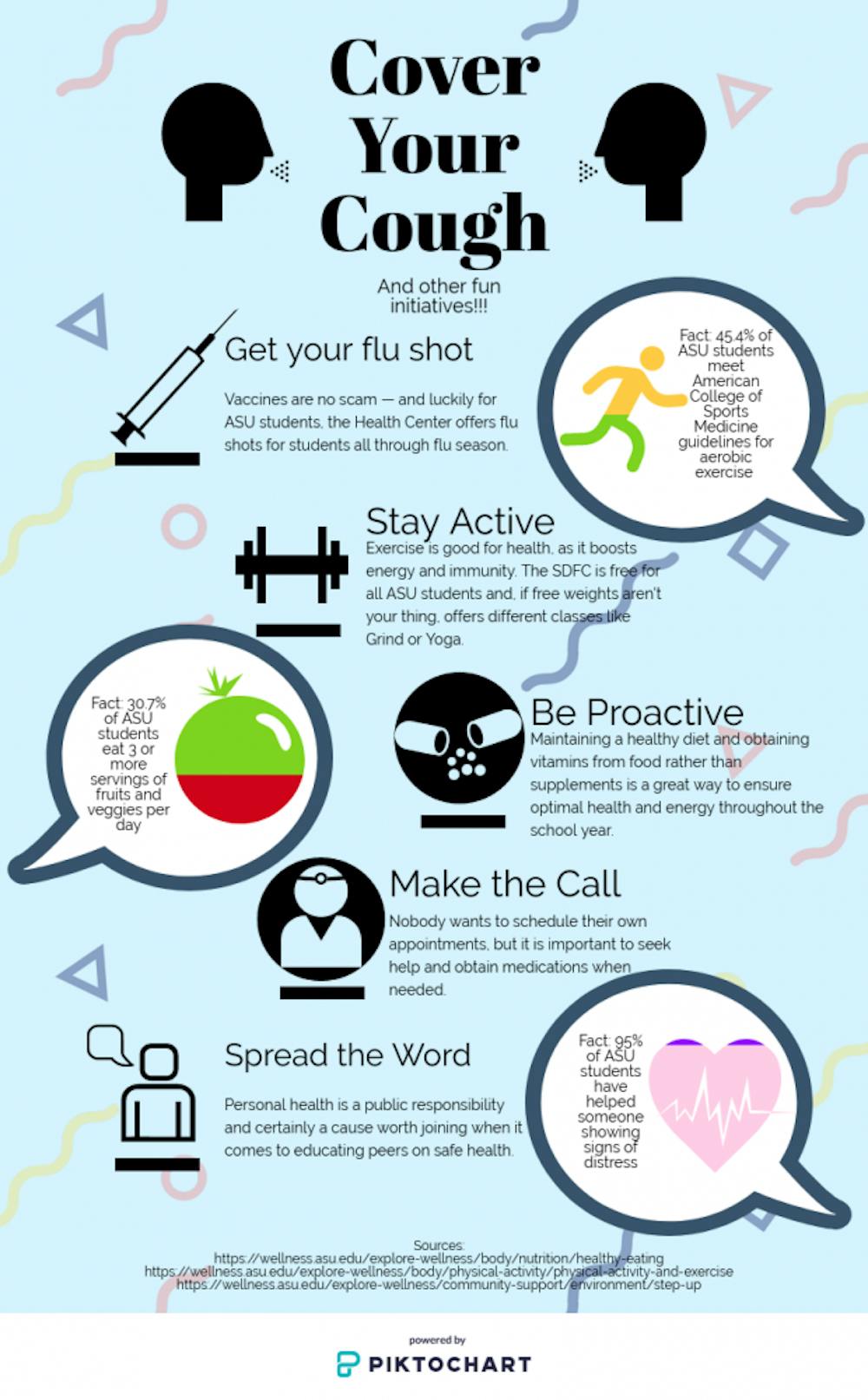Old habits, such as casually sneezing into the open air, die hard.
Personal health is a community issue, especially at such a populated university as ASU, which is why it is important for both the University and students to ensure that they are promoting healthy behaviors on campus.
During cold and flu seasons, which seemingly span the entire academic year, it is important to properly educate people on which behaviors can help reduce risk of falling sick.
Although initiatives such as covering your cough and other etiquette procedures were shown to not be entirely effective at preventing the spread of pathogens, there are still other ways to keep illness contained, such as washing your hands and, as hard as it is, staying home from school when you are sick.
Students, faculty, and health services at ASU should join the initiative for community health and advocate for better and more widespread health communication on campus.
Stefanie Schroeder, a medical director at ASU health services, said that this kind of campaigning for public health is important for the community.
“I think it’s always important to be aware of public health initiatives,” Schroeder said. “We actually have some posters out there … they’re all over campus. We try to have lawn stakes, we have posters in bathrooms, we have tried to disseminate it as much as we can.”
Unfortunately, a lot of times, these signs and posters are either overlooked, ignored or nonexistent in some parts of campus. The inefficacy of the health campaigns and therefore the lack of reminder to students to keep public health in mind could be a factor in poor campus health during outbreaks of the cold, flu or even strep.
“It’s interesting, when you don’t look for them, a lot of people don’t notice them,” Schroeder said. “If you put them up, though, then you will see them. I think that’s how marketing works — when people come to us and say ‘You should put up lawn stakes for this,’ we say, ‘Well, how many lawn stakes have you seen and what did they say?’ They can’t really answer that.”
As students walk around campus, they should take note of their surroundings and try to adjust their behaviors to promote better community health. However, there are also flaws in the health communication itself, which cause these initiatives to yield no impact.
“They’re effective for some people, but we always try to find other ways as well, through social media, or we sometimes put advertisements in The State Press. We try to go with what is most effective, but not one media is going to reach everyone," Schroeder said.
In general, health initiative campaigning has been proven effective in changing widespread behavior, from decreasing tobacco usage to increasing physical activity. However, it is the responsibility of everyone in the ASU community to provide educational resources and maintain the flow of health information throughout the campus.
“The more campaigning you do, the more the information gets out,” Schroeder said.
It is difficult for students to take advantage of campus resources they are not aware of, which is why students should also be cognizant of their behavior to keep themselves and others on campus safe.
“Our primary concern when we go into flu season is to get as many students as possible vaccinated,” Schroeder said. “Then, obviously, social distancing is important when you are sick, so when you’re sitting next to somebody who is coughing or sneezing, move away, cover your cough, use frequent hand washing or hand sanitizers, all of those things are really important.”
The concept of herd immunity can and should be extrapolated and applied to health in general. If more people begin to change their behaviors to help curb the spread of illness, more people will remain healthy through the school year.
“There is always room for more communication and better communication,” Schroeder said. “We’re hoping to educate more peer educators, and to get them out. We’re hoping to have more presence in social media and digitally, and to engage the campus community … We’re trying to have it not just come from health, but really have it come from everybody at ASU.”
Reach the columnist at kalbal@asu.edu or follow @KarishmaAlbal on Twitter.
Editor’s note: The opinions presented in this column are the author’s and do not imply any endorsement from The State Press or its editors.
Want to join the conversation? Send an email to opiniondesk.statepress@gmail.com. Keep letters under 500 words and be sure to include your university affiliation. Anonymity will not be granted.
Like The State Press on Facebook and follow @statepress on Twitter.





